American cuisine is a fascinating blend of culinary contributions from its great melting pot. And many of its citizens feel the urge to try it all, through any means possible. Think back on the food you’ve been offered as you’ve traveled to various states; fried alligator, sushi, steak, Boston’s crabs, Chicago’s pizza. All delicious, all vastly different.
And Americans love eating out, too. According to the Institute of Food Technologists, Americans spend more than half their food budget in restaurants. Many of those restaurants feature exotic, delectable dishes from other countries.
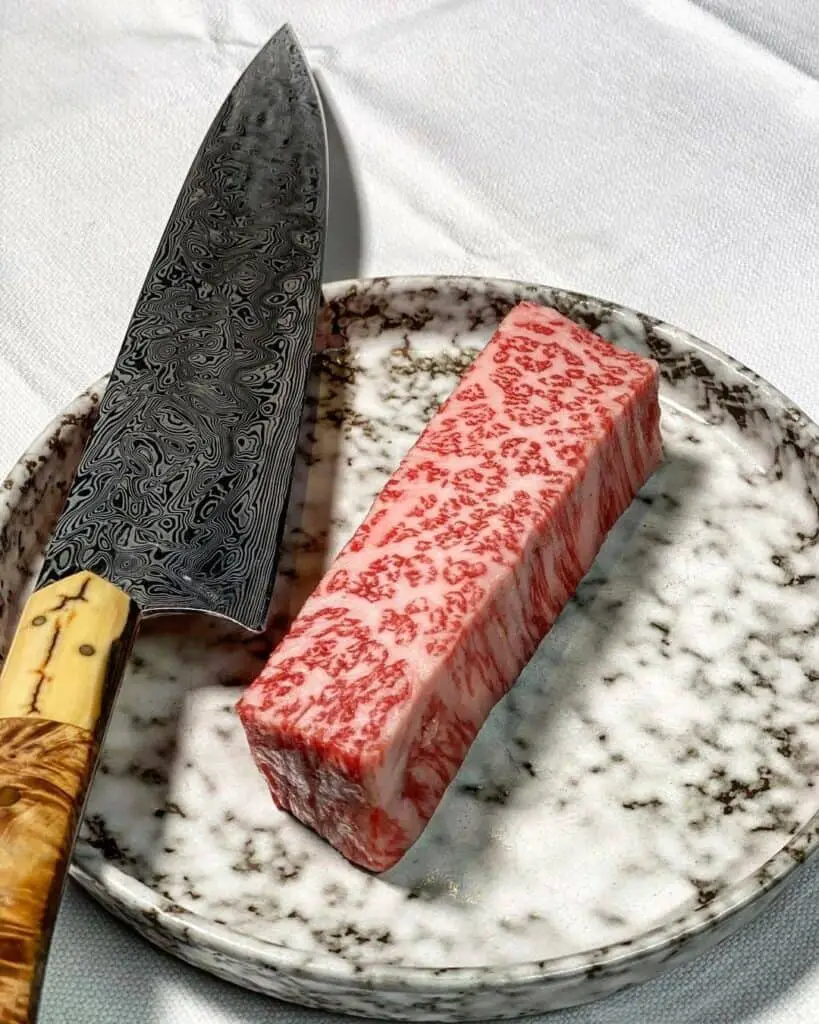

With so many options at home, it’s curious that Americans seek out even more exotic foods from other nations. Even more curious – once they have it, the urge to hybridize it with something purely American is too much to resist.
Take Wagyu beef. You’ve probably heard of Wagyu beef and its popularity, but perhaps the price put you off, and you never investigated further.
So what is Wagyu and why is it so desired?
Wagyu beef is Japanese beef, but only from four different breeds of Japanese Cow. Part of the reason it’s so sought after by Americans is that it’s especially tender, brilliantly marbled, and juicier than American cuts. Those breeds are:
- Japanese Black
- Japanese Polled
- Japanese Brown
- Japanese Shorthorn
However, Wagyu is named more specifically, depending on what region the cow comes from. For instance, Matsusaka beef would be traced back to somewhere near that city. If you’ve never tried the real thing, you’re missing out. Fortunately, though, American Wagyu may be more up your alley anyway.
American Wagyu is the hybridization referenced earlier, with one half of the beef coming from Japanese stock and the other being prized American Angus. The flavor is different, but perhaps more attuned to an American’s culinary sensibilities.
This article will further explore the wonderful world of Wagyu, and answer some pressing questions that are likely already on the tip of your tongue.
What’s The Best Place to Buy Wagyu Beef Online?
It very much depends on how much you want to purchase Wagyu beef online, but there are multiple options.
If you’re looking to buy in bulk, simple, easy options like Costco are probably ideal, though Chicago Steak Company and Snake River Farms are both known for their flash-freezing process their products undergo to maintain optimal freshness. Their meat is also available in bulk, though it’s quite pricey.
But you’re going to have a hard time finding authentic Japanese Wagyu in America. It was outright banned until 2012, and the import costs are high. The best option is The Wagyu Shop, which boasts that it has the real thing and the American hybrid.
What’s the Best Wagyu Beef in Japan?
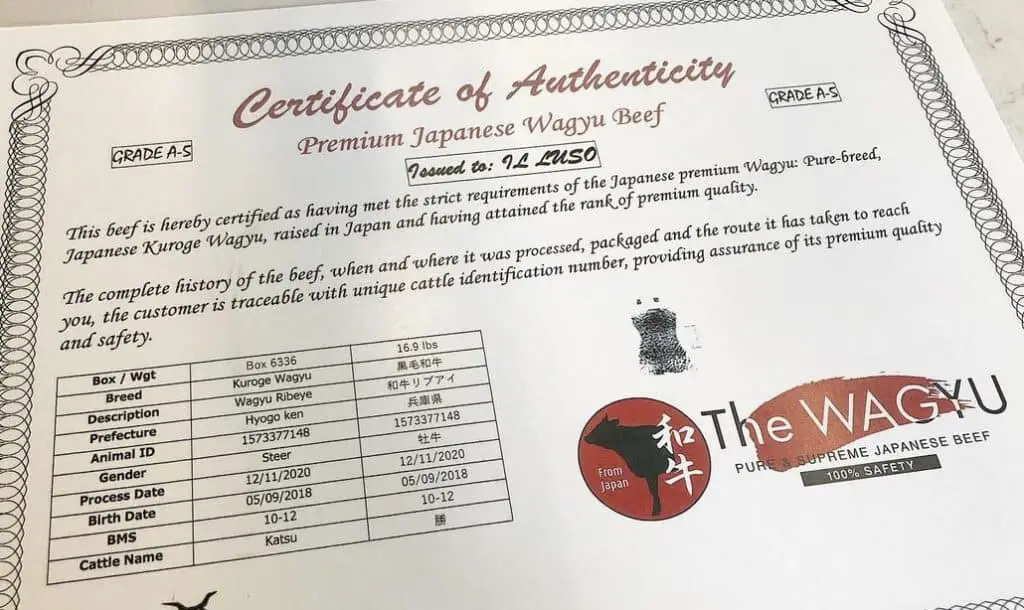
First, a word about yield grades.
Wagyu is held to a different standard than USDA-approved beef. The “Yield Grade ” defines how much quality meat a cow can generate. This is graded by a letter – A through C – and a number – 1 to 5. Using that metric, A5 would be the highest quality possible.
From what is available online, one of the most popular ways to try Wagyu in Japan is in a Wagyu and sake pairing from Ninja Foods. While most local restaurants in Japan tend to specialize in a particular style of Japanese cuisine, this guided tour offers 8 courses of delicacies paired with some of the subtlety of true sake.
Though, if you do feel more comfortable in a restaurant, there are numerous to choose from, most offering A5 Wagyu prepared in a multitude of ways.
Can You Get Wagyu Beef in America?
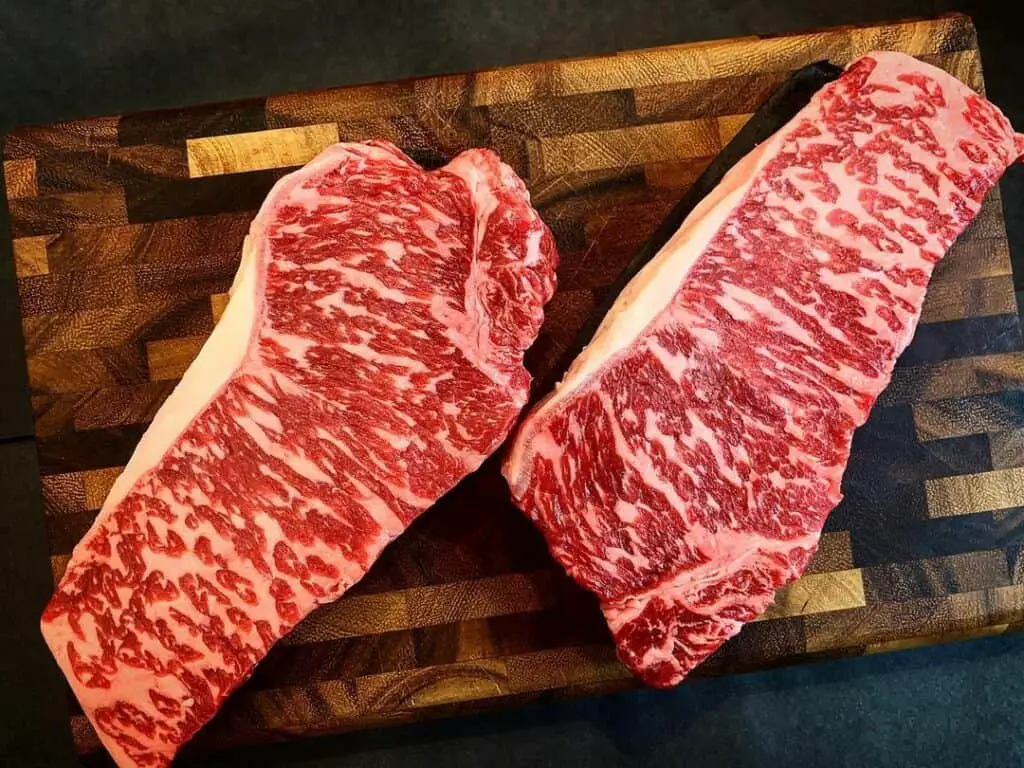
The idea that Wagyu is some black market product in the U.S. because it’s banned is only partially true, and mostly a myth. While it is true that DNA and live Japanese cows are banned from export, the meat itself is not.
While there was a period the meat was banned, it ended in 2012. But the meat is still very well regulated, and the tariffs are high. So while you can get it in the states, it’s incredibly rare.
But the American hybrid, a cow that has been bred part Angus, part Japanese, is readily available. It doesn’t come cheap, but it offers the same wondrous marbling and juicy tenderness that you’re looking for. Even celebrity chef Wolfgang Puck endorses American Wagyu, so you’re not settling for less.
Besides, not all Wagyu is of the highest, A5 quality. Wagyu, literally translated, just means “Japanese cow”, and isn’t any indicator of quality.
What is the Cheapest Wagyu Beef?
As mentioned previously tariffs on the real thing have made it a rarity in the U.S., and American Wagyu has become an acceptable substitute. But that doesn’t mean it’s inexpensive.
The truth is, with Wagyu, the question isn’t what’s cheap, but how to buy it economically. For this, it’s best to try it in bulk. Many of the companies mentioned before offer such packages, with many different kinds of Wagyu included in them.
Buying in bulk is a major discount, however, if you need to buy less, then the cut of Wagyu also dictates its price. So stick with cuts that are often considered cheap in the states, such as chuck roast.
What’s the Difference Between Kobe and Wagyu Beef?
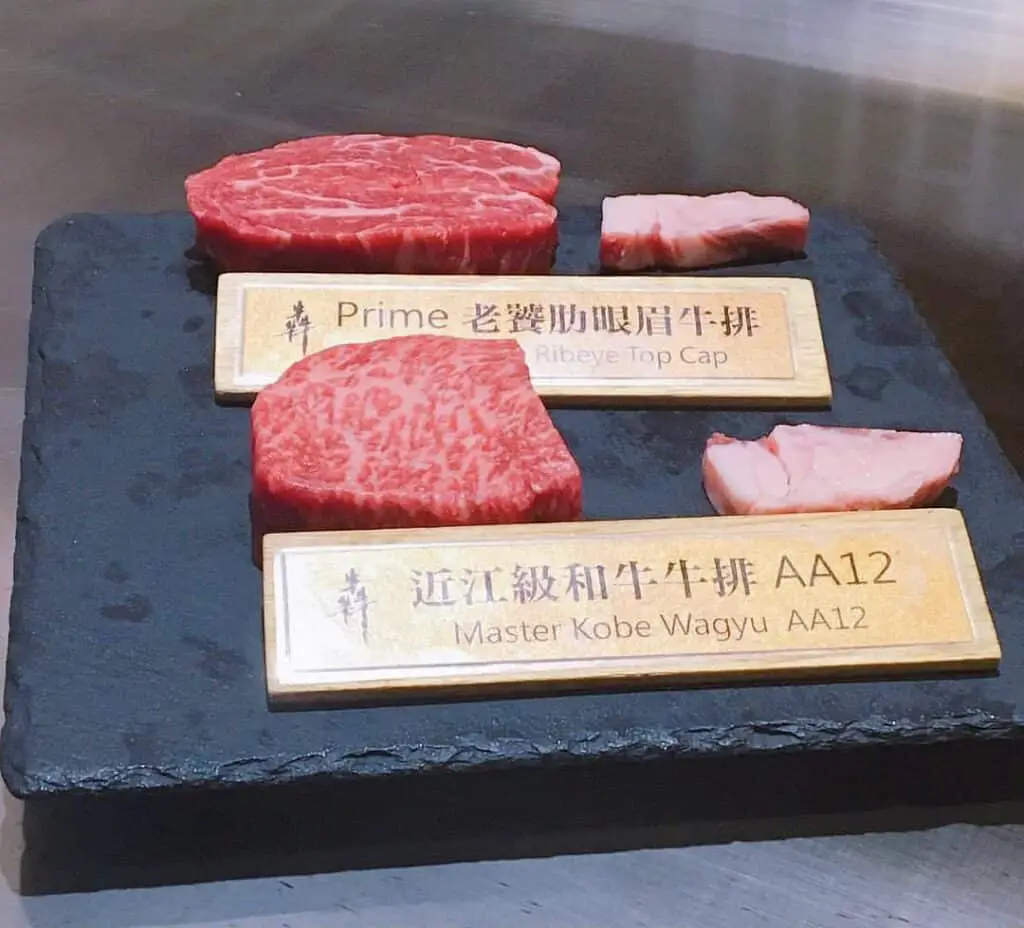
This is a question that’s caused a lot of confusion for fine diners who may not be well acquainted with Japanese cuisine. Champagne can’t be called champagne without being from that region of France. Bourbon is only bourbon in Kentucky, elsewhere it’s known as sour mash.
The same is true with Kobe and Wagyu. Kobe is a place, and Wagyu from that region is called Kobe. This cannot work the other way around. Kobe is a type of Wagyu, Wagyu is not a type of Kobe.
But to many, Kobe is the most desired kind of Wagyu, expressing the marbling and tenderness better than any other variety. In fact, a single portion of Kobe can go for upwards of $200.
Do They Massage Wagyu Beef?
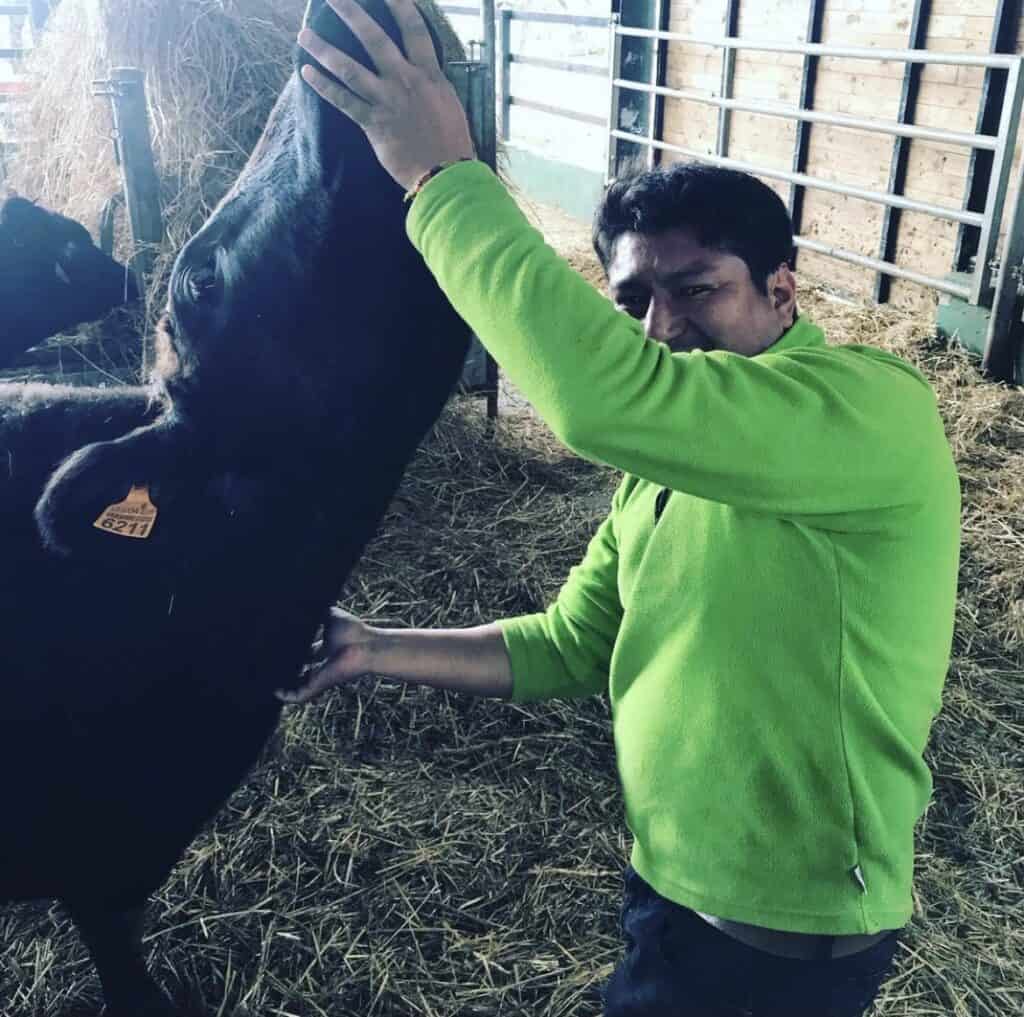
This is one of the most hysterically ridiculous myths about Wagyu, in particular, because it shows just how easy it is to dupe a less knowledgeable American into believing complete nonsense about foreigners. Often, this can be insanely problematic, here it’s just a little funny.
Someone, a long time ago, got the idea in their head that Wagyu cattle are farmed in a very unique, spa-day treatment way before they are slaughtered. As they live, they are pampered with hand massages while being fed beer and sake through a funnel like a cow Caligula. During this, Mozart softly plays in the background, completing what sounds like a David Lynch film.
This, of course, is a fallacy, and asking aloud has resulted in the folks from The Cow Crowd being practically laughed out of the room. It may be somewhat easier to understand that because the cows are raised in ethical and tranquil settings, that’s where at least some of the myth comes from. But it’s the myth that refuses to die.
The cattle do indeed get their hair brushed, and it’s understandable that through mistranslation someone understood that as a massage. And while no one can honestly say that one or two more eccentric Japanese farmers haven’t given their cows a bit of extra care, it’s not standard practice.
The truth is, the diets of Wagyu cattle are kept secret, so there’s no way of telling what they’re actually fed. While the information available points to a healthy diet of rice straw, concentrate, and silage. But beyond that, no one knows.
It’s a safe bet, however, that beer is not a part of a cow’s balanced breakfast. If it is, that cow’s got problems.
Does Wagyu Beef Taste Different?
Of course, it tastes different, that’s the reason it’s such a curiously enticing meal.
Wagyu beef is known for its unique flavor. In part due to the organogenesis of Wagyu cattle, the beef is well-marbled, with thin streaks of fat circling the meat. This means the meat is much more flavorful than traditional American beef, and it’s also much more tender. Interestingly, the fat in Wagyu is healthier than usual.
It has a buttery, firm texture and maximum juiciness. But that juice never translates into greasiness. Instead, it’s very sweet. Some have described biting into Wagyu and feeling it practically dissolve on their tongue.
That sweetness is known as umami flavor, which translates from Japanese to “essence of deliciousness”. If the idea that a bite of umami will send you to the very root of what it means to be delicious doesn’t sell you, nothing will.
Does Whole Foods Sell Wagyu Beef?
Not many grocery stores outside of Costco are known to carry Wagyu beef, though it’s much more common in Europe to find it in stores.
Whole Foods does not appear to offer Wagyu, but they do have one product that’s inspired by the beef. Wagyu Beef Steak Strips is a snack not unlike jerky, but it’s far from the real thing.
As mentioned, the tariffs on Japanese beef as well as its scarceness have made it a rare delicacy, and American Wagyu is not much less expensive. This makes it excessively difficult for supermarkets to carry.
How Much is A5 Wagyu Beef?
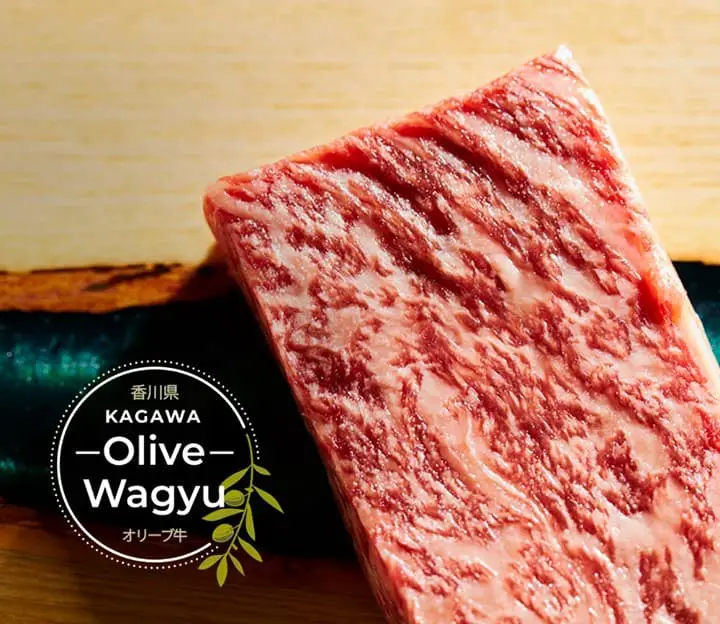
A5 Wagyu is the highest quality Wagyu on the market, so it’s unlikely you’re going to be able to find it cheap. But if you’re asking the question, it means you’re already prepared to cover the cost.
The most expensive A5 Wagyu would be Olive Wagyu. Olive is an incredibly scarcely-resourced variety, as it comes from the small Japanese island Shandoshima. The island is renowned for its olive oil, hence the name. It’s especially unique, as the cattle are raised with olive oil worked into their diet.
This has resulted in the beef winning the top award at the Wagyu Olympics, which is held in Japan. There are 11 prize categories, the most interesting being a measuring of the quality of fat in the beef. Craft beers are also given awards. But in 2017, Olive Wagyu was the variety to beat. Try as they did, nothing even compared.
At a restaurant, A5 Olive Wagyu can be upwards of $480 dollars for a rib-eye steak. Remember, the cut of meat also dictates the price. It’s important to note, though, that you can find the same cut for half the cost online.
Costco’s A5 is a little less expensive, at just $380, but that’s not specifically Olive. If you want the best for less for the full half off, The Cow Crowd costs $240.
So if you have the money to spend, it might be a good idea to check up on the Wagyu Olympics and see who won. If you’re going to drop that kind of coin, may as well go for the best of the best.
How Much is American Wagyu Beef?
American Wagyu is a hybrid of American cattle, typically Angus, and Japanese. So while the taste maintains the succulent, sweet, gentle texture you’re searching for, the actual flavor is more akin to beef Americans are more familiar with.
And being a hybrid means the price is slightly lower, though don’t expect too much of a discount. You’re still going to find prices that are over $100 for most cuts, though some are closer to $40. This is why it’s best to make large orders, particularly useful if you’re throwing a dinner party. Buying in bulk is the best way to save.
For high-quality American Wagyu, however, the prices are often more than $200 per serving.
How to Cook Wagyu Beef
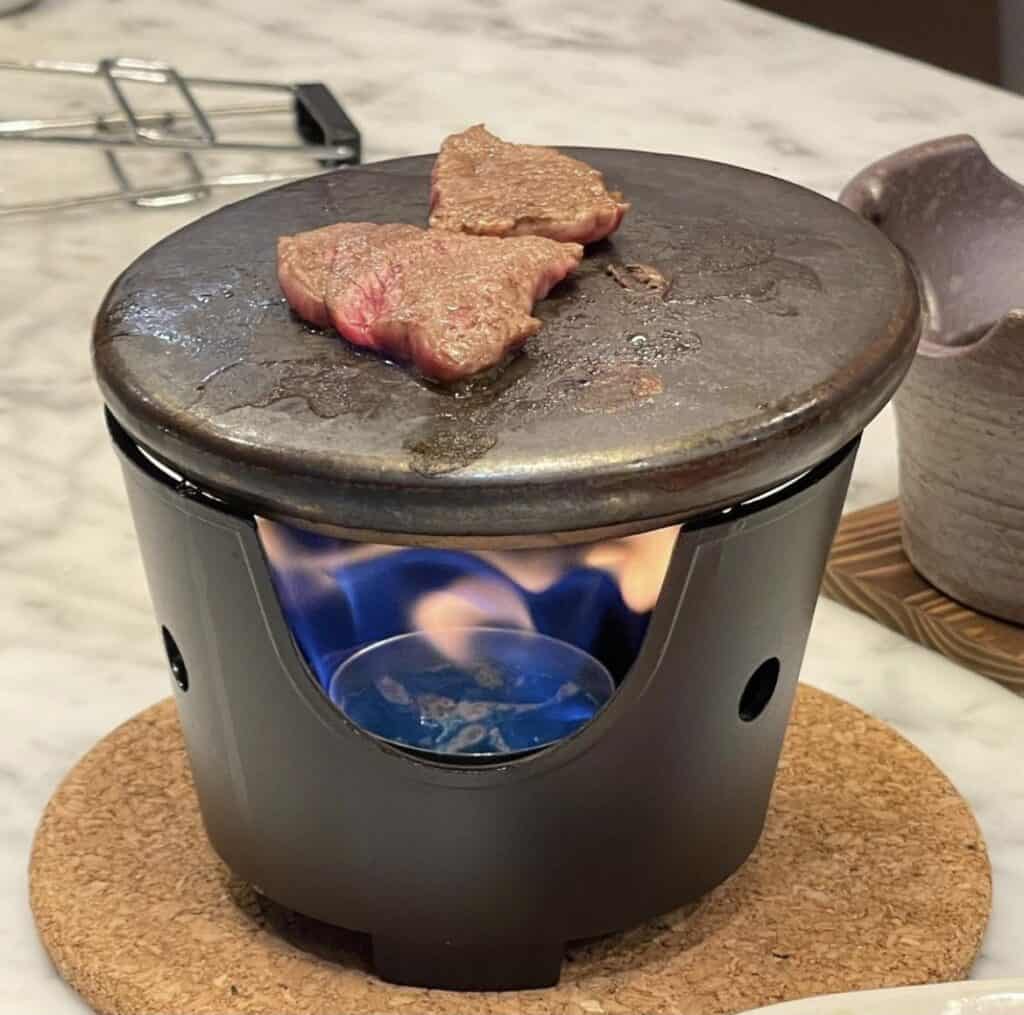
If you’ve already decided to buy some Wagyu, then you’re in for a very special dining experience, provided you know how to prepare it.
The most important thing to remember about Wagyu is that it’s surprisingly easy to work with. What you’re trying to do is really bring the juices to the fore, and they are at their most juicy when the fat cooks into the meat. So you’ll want to cook medium-rare.
Here are some other tips in preparation before the actual cooking begins.
– Don’t cook it cold: About an hour before you start to cook, take it out of the fridge to get it at room temperature. This will help the meat cook more evenly.
– Salt, but not too much: Remember that the juices within the meat are what makes Wagyu so incredibly tasty, so there’s not much seasoning necessary. Salt and pepper to taste is recommended, but you probably don’t want to do too much more.
Now, on to the actual cooking! As much as you may love barbecue, it’s actually not recommended to cook Wagyu on a grill, as flare-ups make it hard to grill evenly. A cast-iron pan skillet is your best option. Sear both sides of the beef for about 3 to 4 minutes.
Three minutes is the optimal time for a medium-rare, though if you want a more well-done piece, you will want to go the full four. There’s no right answer to how you can best cook it, it entirely depends on how you like it.
The best piece of advice is not to overthink cooking it. If you keep the process simple, the results will be restaurant quality.
How to Serve Wagyu Beef
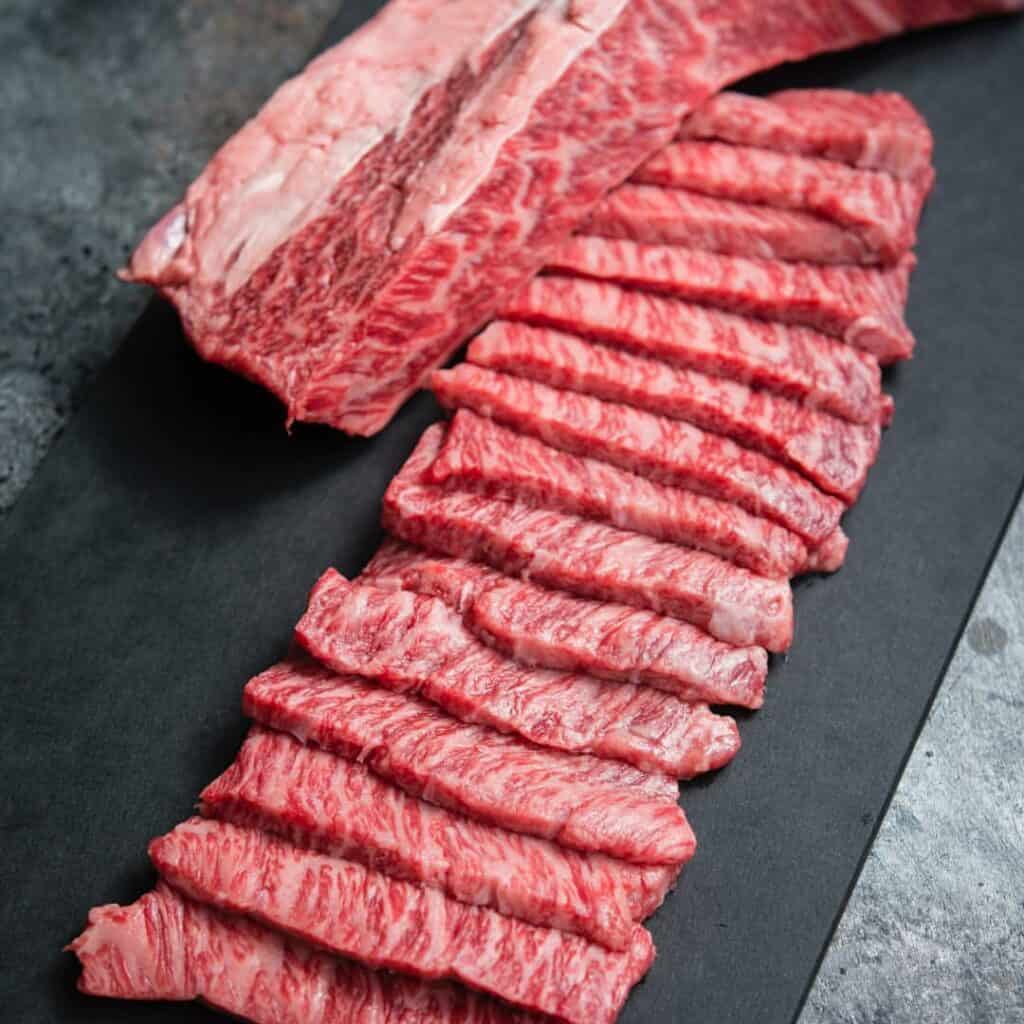
There are countless ways to serve Wagyu beef, just like any other cut of steak, but why not serve it in traditional Japanese fashion?
To really impress your dinner guests, take a lesson from the East. The Japanese like to get the most out of Wagyu’s succulent flavor, so they serve the meat in thin slices. These can already be cooked, or prepared at the table in a hot pot, or Japanese barbecue.
Often, the meat is served with a side such as a vegetable and a raw egg. But in the U.S., this trend hasn’t really caught on. Raw eggs are rarely included in any meal stateside, but a cooked one, such as they do in other Eastern nations, would be a perfectly reasonable substitute.
Is Wagyu Beef Worth It?
Now that you know just how much a quality cut of Wagyu beef, the ultimate question is whether or not you think any food is worth that kind of money And the answer will vary from person to person.
It may be a little hard to believe, but yes, Wagyu beef is worth the heavy cost. First, it’s incredibly scarce. If you’ve taken a single economy class, you know that supply and demand explain most of the reasons Wagyu is as expensive as it is. Currently, there are only around 5,000 living purebred Wagyu cows.
Secondly, the marbling is more than just a pretty texture. Marbling is where monounsaturated fats lie, the same fats you’re looking for when you’re eating avocados (trendy in California currently), olive oil, and nuts.
Marbling is the thin, lacy straps of fat that surround the meat, and it’s responsible for a lot of the flavor. However, it’s also loaded with protein, both Omega-3 and 6. These fatty acids can help fight arthritis, Alzheimer’s disease, heart disease, high blood pressure, and even depression. So not only is that excellent, sweet flavor that you won’t taste anywhere else amazing, it’s healthier than most meats you’ll find.
And finally, it’s an ethically sourced meat. With so much focus in the world today on ethical practices in the food and drug industry, this is a crucial factor in both pricing and eating meat. That marbling doesn’t come naturally. It can only be produced in calm, stress free-environments (which probably also contributes to that pesky “massage” myth). Not only are the cows given a name instead of a number, but they are also raised in barns instead of free-range.
It’s still worth noting, however, that there’s no recorded period in which the cattle were beer-bonging with a funnel. As much fun as that is to imagine, the cow really wants to put those years behind him.
Conventional farming practices in the states often make life very difficult for the cattle. Their diets are loaded with carbs and sugar so they grow faster, which doesn’t make for a great lifespan.